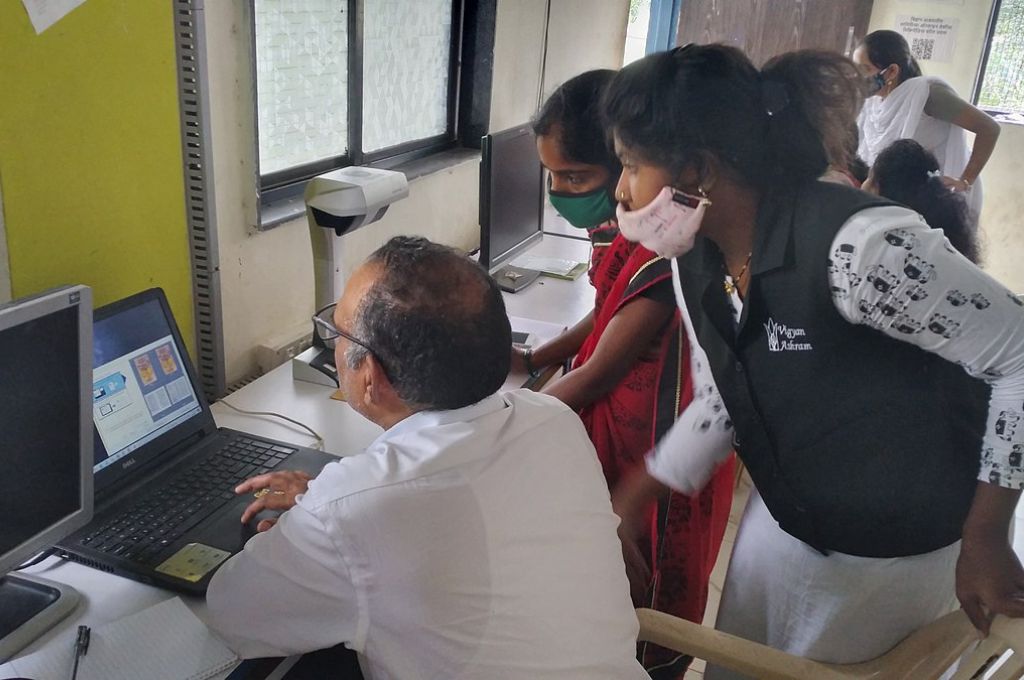Many nonprofits in India are using technology to solve their problems. From basic and easily accessible tools to sophisticated tracking and analytics software, these solutions are helping organisations try innovative approaches to old problems. Through our work at Project Tech4Dev, a collaborative working with software companies and nonprofits, we have also seen many nonprofits use tech to improve the efficiency of their internal processes, including in salary processing, accounting, and documentation management and control.
But, despite growing demand for tech solutions, nonprofits face many obstacles in developing and adopting technology that adequately serves their needs. Over the last four years, Svarya’s work with more than 40 organisations has revealed some common patterns in their trying to use technology effectively.
Related article: Developing our digital commons
The Companies Act, 2013 mandates a ceiling of 5 percent for covering administrative overheads, which many corporate funders enforce with the nonprofits they fund. Other kinds of funders also tend to insist on minimising expenditure they consider to be an ‘overhead’. All information technology (IT) investments are generally included in this category of administrative expenses, and therefore remain underfunded.
The funding constraints that nonprofits often deal with, make hiring software developers and maintaining large IT teams near impossible for them. Even reasonably well-funded organisations lack sufficient in-house IT talent and resources, at all levels.
Software providers that serve the social sector are few and far between. In our experience, they lack business intelligence on this sector, which limits their ability to suggest suitable and affordable solutions to their nonprofit clients.
These factors together result in an expertise- and resource-scarce environment, which produces sub-optimal solutions.

But, despite growing demand for tech solutions, nonprofits face many obstacles in developing and adopting technology that adequately serves their needs. | Picture courtesy: Libreshot
Enter open-source
Open-source or free software includes any software that can be publicly distributed without permission from the original creators, and can also be modified or publicly used by anyone. In some cases, there may be certain conditions that apply to users, for instance, if a user made improvements to the original software, they need to distribute the modified software for free as well.
Open-source software is not heavily protected by complicated licenses and intellectual property regulations.
This is unlike most softwares we use, from Microsoft Office Suite on our computers to the food-delivery apps on our smartphones. ‘Proprietary softwares’ like these, are considered intellectual property (similar to books and paintings), and they are thus regulated, and protected. Unlike open-source, these softwares cannot be copied, edited, or freely shared by users.
Open-source is usually a more suitable alternative to paid softwares for the nonprofit sector. Here’s why:
1. Open-source software is not heavily protected by complicated licenses and intellectual property regulations. So, once a solution is developed, it can be easily replicated across organisations and shared widely for others to use and modify, without paying any additional fees to the original developers. This makes open-source software affordable and accessible in a way proprietary software is not. Its affordability also makes it an attractive proposition for funders who want to support their nonprofit partners to invest in tech.
2. With proprietary software you can face difficulties with compatibility, especially if you are using these solutions alongside existing or older solutions—which is often the case with nonprofits. In fact, because you cannot customise or modify solutions to meet your needs, you can often become overly dependent on a single software provider. Moreover, implementing future improvements or changes will mean added cost.
To illustrate the kinds of challenges that often come up, let’s look at an example. In 2018, a community healthcare nonprofit working in rural Maharashtra wanted a tech solution to monitor the health of community members, and also track patients at the district hospital. However, most software solutions that could be used for patient tracking were geared towards large hospital management. They were too cumbersome and expensive for a resource-constrained organisation. Further, because of its small size, this nonprofit could not get many IT vendors interested enough to develop a fully customised solution that would fit their needs. Had it not been for an open-source platform that the organisations ultimately went ahead with, they would have had to continue conducting constant field visits for manual data collection through hand-filled forms. Additionally, they would have had no choice but to spend lots of time and effort on correcting errors and updating information. Unfortunately, experiences like this one are more common than we realise.
3. There are many open-source softwares and tools that can be picked up and used without any customisation, like in the case of tools such as WeTransfer or CamScanner. However, some softwares may need customisation, and will require the help of a solution provider. In most cases, these are still more affordable options than proprietary softwares.
Related article: Are you asking the right questions when it comes to technology?
So, where do you begin?
If you are a nonprofit and want to use technology, especially open-source, here are three key questions you need to ask yourself:
Ideally such problems would involve:
- Repetitive tasks that don’t require a lot of skill
- Lots of data that needs to be collated, processed, and analysed
- A lot of effort and time, and also the potential for a lot of errors
There are a lot of free resources available that could be used by nonprofits to solve simple problems and which may not need customised solutions. These resources can include free add-ons to Microsoft Excel, which can be used for analysing large amounts of data, creating charts, or building simple applications; free analytics tools like Power Bi, which help with creating dashboards and reports; and free versions of basic project management and customer relationship management solutions. Many of these resources can be used quite effectively for addressing small organisational needs. You can decide to go for a customised solution, if these resources prove inadequate.
You are better served by open-source solutions if the problems you seek to address are very similar to problems faced by organisations in your sector, or even other nonprofits doing similar things, including collecting field data, tracking the people your project serves, monitoring projects, evaluating impact, and using dashboards. Open-source solutions may also work better for you if you have a small staff, (roughly 10-50 people) or if your funding is restricted to specific line items. They’re also a good option if you don’t have enough capacity to deal extensively with big IT vendors and don’t want to be stuck with expensive annual maintenance contracts.
Some guidelines for implementing open-source tech
For a tech solution to be as effective as planned, you may need to ensure that certain prerequisites are in place. Some basic considerations are:
For every technological solution to work as intended and be effective, it needs to be complemented with a good process. You must ensure your processes are in place before you decide to go for a tech solution. For example, a tech solution to ease data collection on the ground can only be effective if there’s a clear process that determines what data is to be collected, to what extent, and at what collection frequency. The process should also ideally create adequate ownership and accountability.
The people in your organisation who will use the proposed solution should believe in its ability to achieve the stated objectives. Involve them in the process right from the start as their inputs are critical in designing an effective solution. Plus, getting their ‘buy-in’ will also increase their adoption of the new tech solution more quickly.
Related article: The missing link in technology
If using a software that needs to be customised to your needs, be ready to commit time and resources to work with your solution provider to build it to your requirements.
While open-source software solutions are worthwhile options for nonprofits to consider, there are challenges with and drawbacks to adopting them as well. Because open-source is about making tech available to people so they may use, adapt, and improve upon it, its advantages accrue when there’s a community that does those things, and can act as a support system for users. In India, many potential open-source solutions still need to build that community. So, when it comes to solving specific problems, you may not find a great solution with long-term support. Given this, you could consider developing basic IT skills in-house, so you can still benefit from the advantages that open-source softwares have to offer.
Second, open-source tends to be highly functional, which means that there is greater emphasis on how it works, and less on its appearance and user interface. In other words, don’t expect open-source apps to be as slick as Swiggy or Uber. As long as it serves your needs, it is worth considering as a tech solution.
Finally, it’s important to note that open-source technology, being less established in India, may not have all of the readymade features common in proprietary solutions by large corporations. But, given the constraints of Indian nonprofits, it has the potential to make technology far more accessible, affordable, and easier to use within the social sector.
—
Know more
- Read this Stanford Social Innovation Review article which speaks about how open-source software can spark innovation and accelerate social change.
- Read this article on the importance of open-source technologies in a collaborative and for-impact future.
Do More
- For a range of open-source tools that help with everything from e-signing documents to project management softwares, click here.
- Follow this link for a curated list of free and open-source softwares, freemium tools, and guides for nonprofits.
- If you are a funder, support the creative of open-source platforms that can benefit nonprofits, for instance, two-way communications with community members, or data collection; encourage nonprofit partners to be upfront about their budgetary needs when it comes to implementing tech solutions. And, explore whether organisations you support can benefit from a common technological solution—which might only involve a one-time cost at your end.




